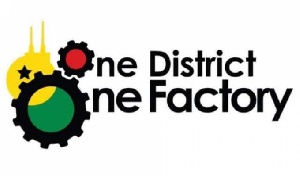 Initiative by government to transform the country
Initiative by government to transform the country
There is no gainsaying that the initiative by the Akufo-Addo government to transform the country’s economy from predominantly, agro raw materials-based to a more industry–lead through the one-district, one-factory is a laudable one which needs commendation and the support of all Ghanaians.
However, with the history of failed industrialisation efforts from the first republic and through to the challenges facing recent attempts to diversify the economy by establishing government-led industries such as the Pwalugu Tomato, the Ayensu Starch, the Komenda Sugar, and the Kumasi Shoe factories, this writer believes that a thorough research needs to be conducted on the challenges facing public, and/or public-private partnership business ventures in Ghana to inform critical decisions on the 1D1F implementation.
Key issues the research may focus on include: Policy Implementation Directives (PID), Ownership/Funding Structures, Manufacturing Strategy, and Enterprise Management/Leadership. All the issues mentioned above are critical to the long-term success of the 1D1F. However, the thrust of this write up is on manufacturing strategy and more precisely; how does the 1D1F ensure that the features and characteristics of its products/service offering appeals not only to local customers, but also to customers of the global marketplace, and that the operations and processes of manufacturing are compatible with the requirements of environmental integrity?
Manufacturing strategy
Increasingly, forward-looking companies are competing through their product offering, and through their manufacturing activities. The ability to respond to customer demand by having the capability to develop and produce new products quickly and effectively is an important prerequisite to become successful at the competitive marketplace. This focus on the market place similarly drives the development of strategies for the manufacturing function, conversion of inputs such as raw materials, labour, machines, and facilities into finished goods and services, and provides a company or business unit with a competitive posture
For a manufacturing strategy to be effective, questions such as the following should be examined: how and where a product or service is to be manufactured, the level of vertical integration in the production process, the deployment of physical resources, optimum level of technology the firm should use in its operations processes, relationships with suppliers, products warehousing and distribution etc.
Consequently, manufacturing enterprise decisions regarding: raw materials, production equipment and machinery, and distribution need to be taken concurrently
Quality
Today’s business environment is characterised by intense competition in saturated or shrinking markets, sharp rise in materials and labour cost, fluid and unpredictable financial system, rapid changes in technology and more exacting consumer quality requirements, making it imperative for manufacturing firms to ‘rethink’ the way and manner business is procured and delivered – adopt lean and TQM culture.
Lean manufacturing operations use less of everything compared with traditional manufacturing practices:– half the human efforts in the factory, half the manufacturing space and inventory, and results in fewer defects. TQM, on the other hand, is a company culture characterised by increased customer satisfaction through continuous improvements in which all employees actively participate. Together, both lean and TQM help companies reap the benefits of higher quality, lower cost and faster delivery.
For instance, what would account for the Ghana Armed Forces (GAF), one of the shareholders of the Kumasi Shoe Factory not to patronise the products of the firm, but would rather use the taxpayers’ monies to patronise inferior and cheap foreign products, as alleged by the management of the Kumasi Shoe Factory? Indeed, in the competitive marketplace, the consumer is King! – producers produce the products and service but it is the customer that makes the decision to buy!
To be competitive, manufacturing firms should focus on reducing cost. The best way to reduce cost is to remove the waste. In order to be successful, organisations must continue to change, and TQM is the vehicle that can be used to drive this change.
Globalisation
A global strategy seeks to meet the needs of customers worldwide, with the highest value at the lowest cost. Today, boundaries of countries no longer can define the limits of our imaginations. Thus, it is a matter of survival for businesses to appreciate and gain an understanding of competitors, markets, prices, suppliers, distributors, governments, creditors, shareholders, and customers, from a worldwide perspective. What is more, the formation of regional trade associations and agreements, such as the European Union, NAFTA, ECOWAS etc. have led to an increase in harmonisation of standards so that products can more easily be sold and moved across national boundaries
This means that many new ventures such as the 1D1F may find it difficult to survive and grow by relying solely on domestic markets. It is not exaggeration that in an industry that is, or is rapidly becoming global, the riskiest possible posture is to remain a domestic competitor. The domestic competitor will watch as more aggressive companies with global presence invade the space of domestic markets using superior technology, new product design, innovative marketing approaches and economies of scale.
Environmental sustainability
Not too long ago, a business corporation could be successful by focusing only on making and selling goods and services within its national boundaries. International considerations were minimal. Similarly, until the latter part of the 20th century, manufacturing firms could be very successful without being environmentally sensitive. Companies dumped their waste products in nearby streams or lakes and freely polluted the air with smoke containing noxious gases. Today, everything has changed. Globalisation has changed the way modern corporations do business.
In addition to understanding its emissions costs, every 1D1F needs to evaluate its vulnerability to climate-related effects such as regional shifts in the availability of energy and water, the reliability of infrastructure and supply chains, and the prevalence of infectious diseases.
In order to ensure the long-term viability of the 1D1F programme, its products and services should be of international standard quality, efficiently produced with manufacturing processes that conform to environmental requirement and have global perspective.